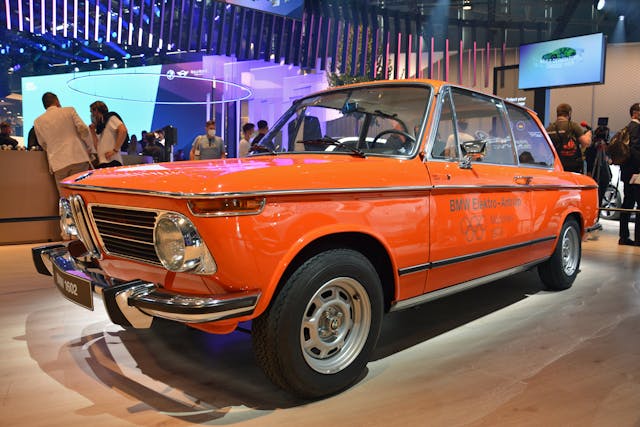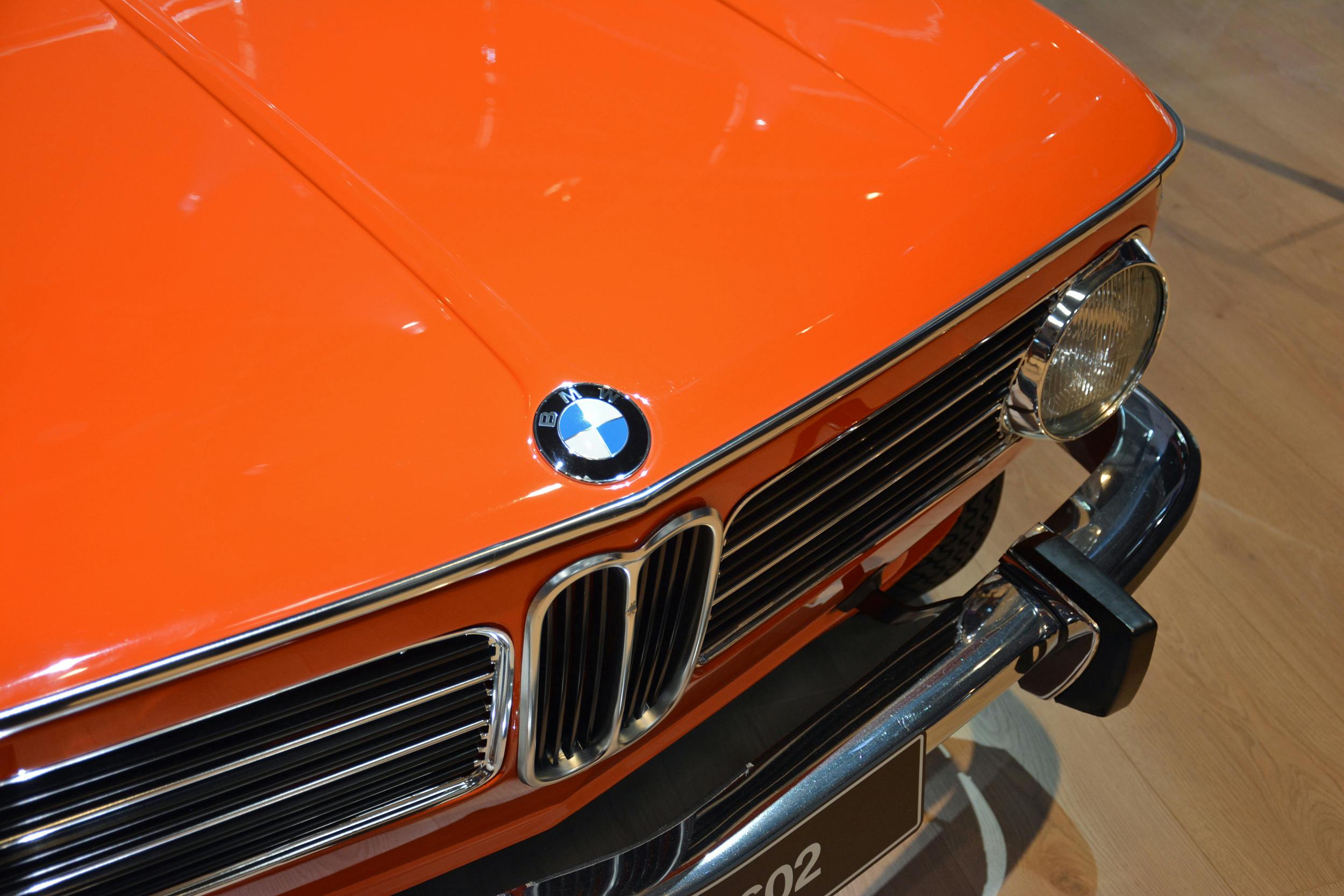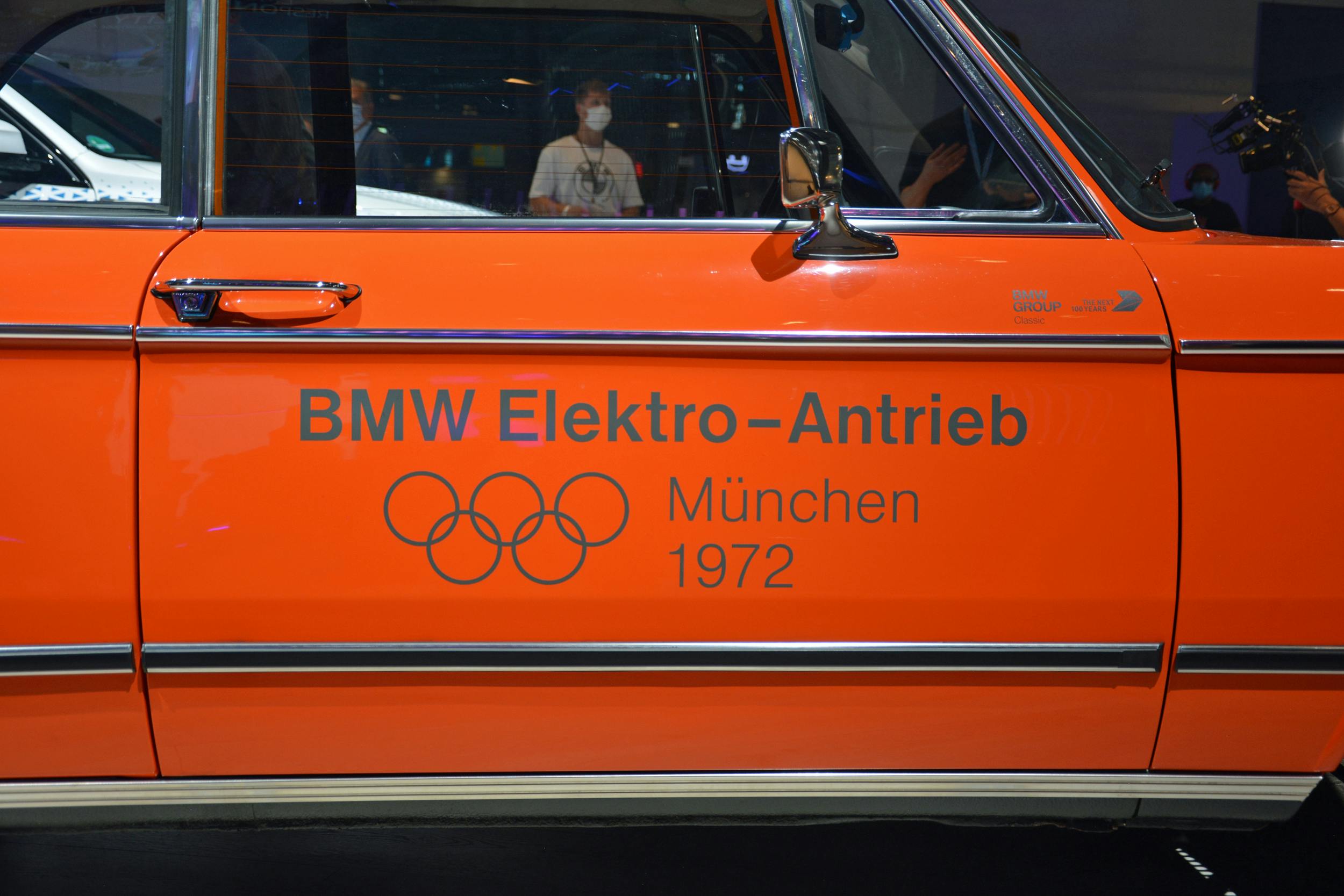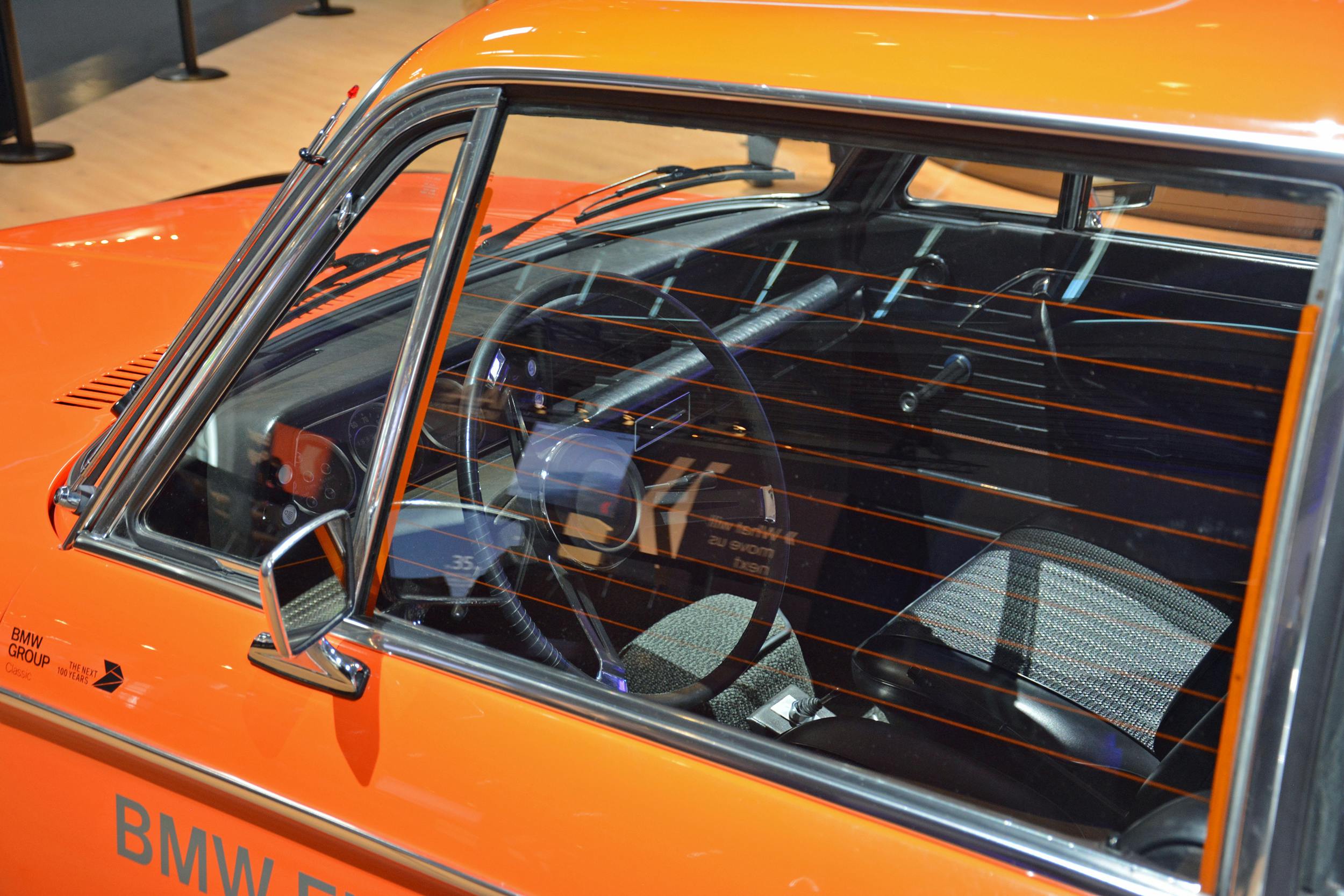Media | Articles
50 years before the i4, BMW showed off an electric 1602 at the Olympics
BMW, like many of its peers and rivals, began experimenting with electric technology in the 1960s. It funneled the lessons it learned into a battery-powered variant of the 1602 developed jointly with Bosch and presented to the public during the 1972 Olympic Games, which were held in Munich. One of the two prototypes built is part of BMW’s collection, and it perfectly illustrates how far EVs have come.
After removing the engine and the transmission, engineers installed a 43-hp electric motor in the transmission tunnel and linked it to a 771-pound battery pack made up of a dozen regular 12-volt batteries (like the one in your car). More weight plus a lot less power was a disastrous equation: The electric 1602 took 8 seconds to reach 31 mph and topped out around 62 mph. Its driving range told a similarly impractical story—around 19 miles in dense city traffic or about 40 miles at a constant 31 mph. In light of this, BMW made the battery removable so users (in theory) wouldn’t have to wait for it to charge.

BMW consigned the project to the automotive attic. However, while the battery-powered 1602 was never a serious candidate for mass production, some of its technology lived on in later prototypes, including one based on the E30-generation 3 Series that was tested by the German postal service. One of the clever features that stood the test of time is the brake energy recuperation system: The 1602’s motor doubled as a generator that sent the electricity produced during braking back to the battery pack.
To read our review of this electric 1602’s modern-day descendant, which appears destined to a far happier fate, click here.
Marketplace
Buy and sell classics with confidence









